
Culture
17:12, 26-Jul-2018
Decoding BRICS: What role does culture play?
Updated
16:23, 29-Jul-2018
By John Goodrich and Yang Meng

BRICS was created primarily as a trade and economic forum, but has now evolved to cover collaborative projects between Brazil, Russia, India, China and South Africa across a host of fields.
Encompassing over 40 percent of the world’s population, BRICS members have reached a consensus on the importance of people-to-people exchanges across culture, sports, education, film and youth.
In a spirit of openness, inclusiveness, diversity and mutual learning, the bloc's countries have promoted new friendships at all levels of society, while deepening relations and mutual understanding.
The impact of people-to-people exchanges can be seen in the various BRICS forums, on cinema screens, on football pitches, and on the streets of member countries as people travel and study within the bloc.
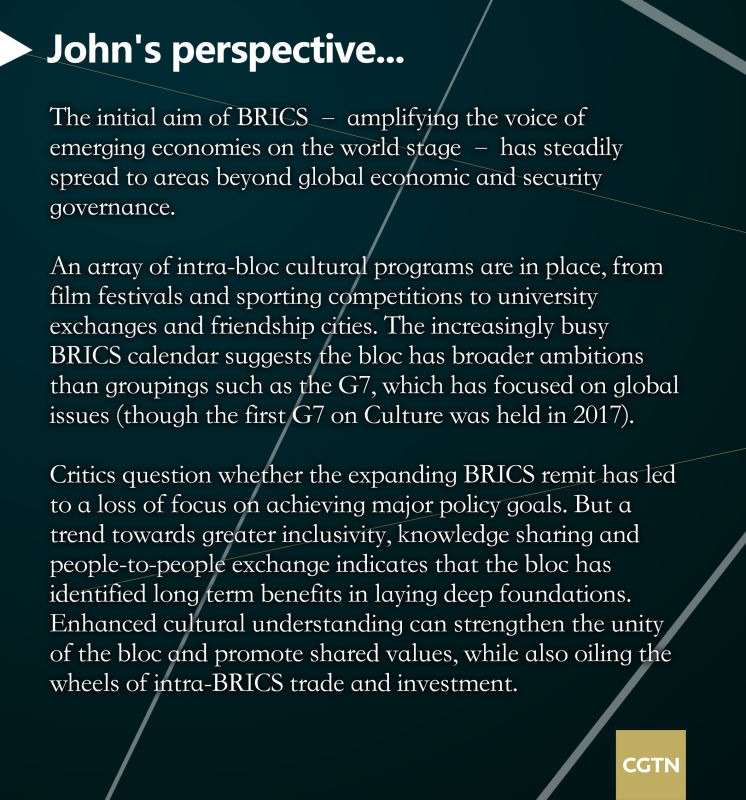
/CGTN Photo
/CGTN Photo
Tourism
Travel is one of the easiest and most interesting ways to discover the diverse cultures of BRICS countries. To deepen tourism collaboration, the host of the 3rd BRICS summit – South Africa – proposed the establishment of a BRICS Tourism Track of Cooperation.
According to the 2017 BRICS Joint Statistical Publication, the number of tourist arrivals in BRICS counties from BRICS countries has been on a rise.
Take China, for example, where the overall number of tourist arrivals from BRICS countries reached 2.936 million in 2017, almost twice as many as in 2009.
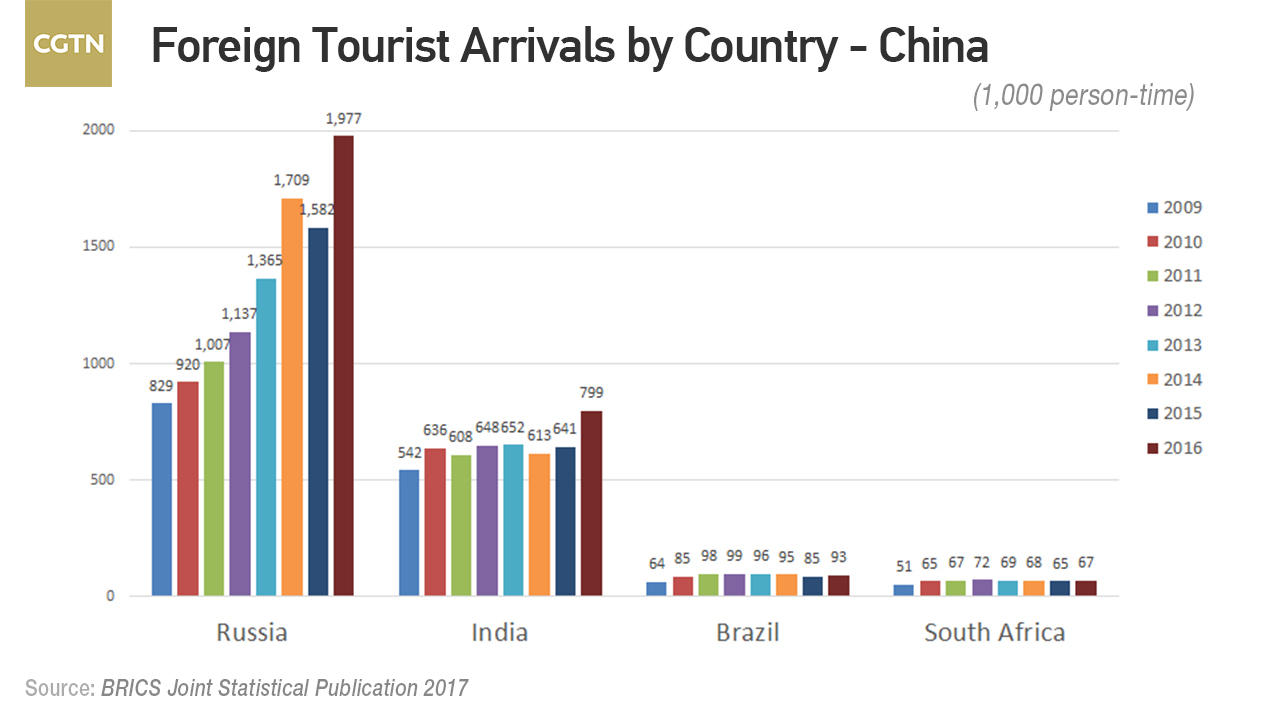
Foreign tourist arrivals by country. /CGTN Photo
Foreign tourist arrivals by country. /CGTN Photo
Film
Co-productions are the headline manifestation of BRICS cooperation and exchanges in the film and television industries.
The first feature-length co-production, “Where Has the Time Gone” was critically acclaimed and won several prizes at international film festivals. The film consists of five short stories, one from each of the BRICS countries.
In early 2018, Chinese executive-producer Jia Zhangke announced that the second co-production – “Half the Sky,” which focuses on women, will be released this year.
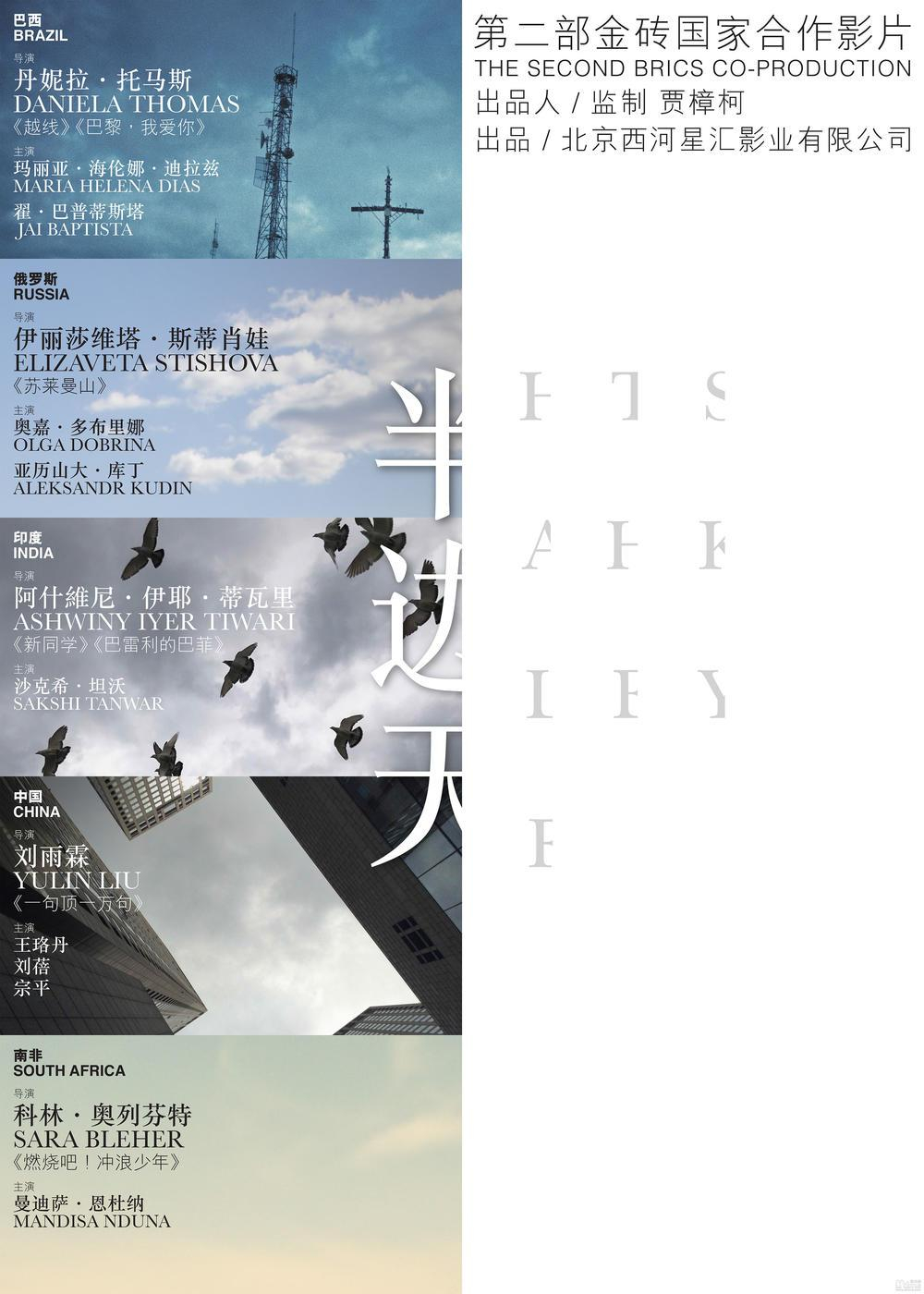
BRICS co-produced film, "Half the Sky". /Sina Photo
BRICS co-produced film, "Half the Sky". /Sina Photo
"The box office performance and audience support of 'Where Has the Time Gone' has exceeded our expectations," said Jia. "The 90 minutes were like a wonderful journey of different cultures. Audiences can see the talents and emotions of the directors from different countries."
BRICS has also spawned a film festival, which in 2018 forms part of the Durban International Film Festival and runs concurrently with the summit in Johannesburg.
Great films originating in a single BRICS country are also important mediums for cultural exchange. Bollywood has had significant intra-BRICS success, particularly in China. Aamir Khan’s “Dangal” made over 190 million US dollars at the Chinese box in 2017, and “Secret Superstar” also crossed over 118 million US dollars in January 2018.
Media cooperation does not stop at film and television, with industry leaders meeting for a BRICS Media Forum in Cape Town ahead of the 2018 leaders' summit.

"Dangal" /Sina Photo
"Dangal" /Sina Photo
Sport
Sporting competitions have emerged as a new feature of BRICS cooperation over the past two years.
The first BRICS Games took place in Guangzhou, China in 2017, and the second was held in Johannesburg ahead of the 2018 summit in South Africa. More than 200 athletes from the five member nations took part in several sports, including women's football and under-21 volleyball.
"The significance of BRICS Games is that we create an opportunity for our young people to get to know one another. We use the power of sport as the universal language to get them to play, to interact and to teach to respect within the rules,” Gert Oosthuizen, South Africa’s deputy sports minister said.
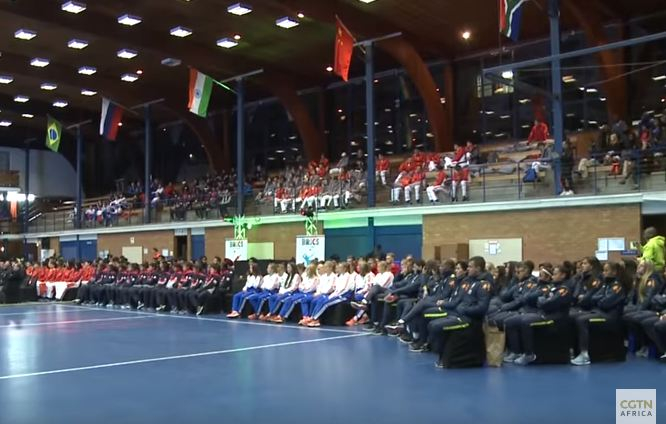
Second edition of the BRICS games. /CGTN Photo
Second edition of the BRICS games. /CGTN Photo
Education
At the 3rd Annual BRICS Network University Conference in early July 2018, Naledi Pandor, South Africa's minister of higher education and training reiterated the importance of education collaboration to the development of BRICS countries.
In November 2013, the BRICS ministers responsible for education met on the margins of the UNESCO General Conference in Paris to agree on a road-map for education collaboration.
Higher education mobility was a key aspect of the discussions, Pandor said, leading to the establishment of the BRICS Education Working Group a year later in Brasilia.
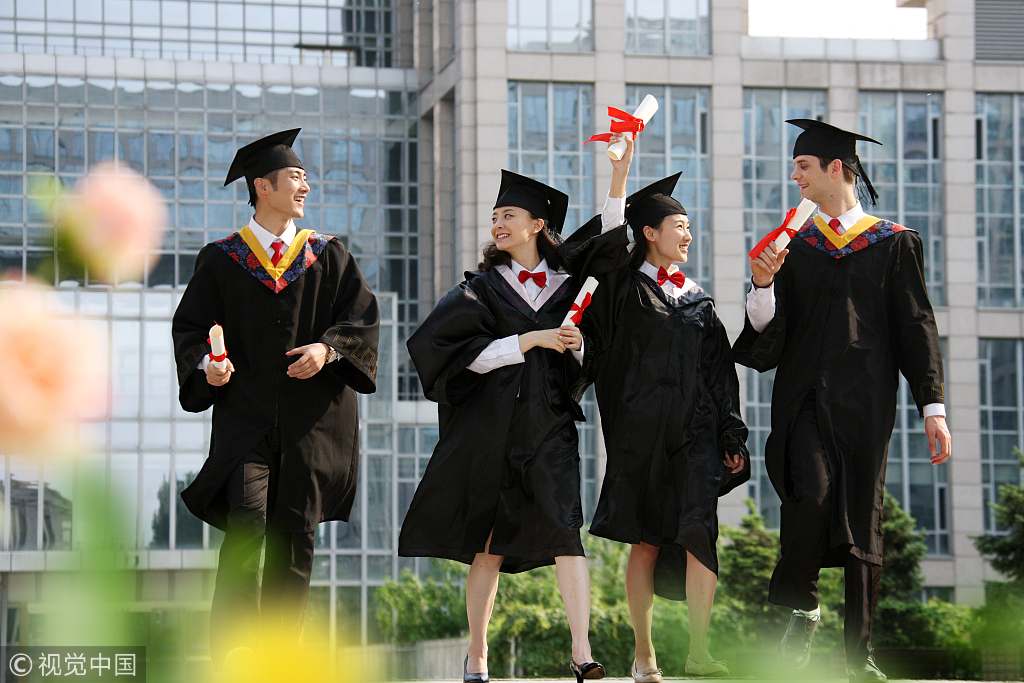
VCG Photo
VCG Photo
There, the BRICS heads of state reaffirmed the importance of higher education exchange for BRICS and called for a network of universities across the BRICS countries to collaborate and exchange their knowledge and research experience.
In November 2015, a Memorandum of Understanding on the establishment of the BRICS Network University was signed in Moscow, Russia.
Pandor stated: "If universities in the BRICS collaborate successfully on research and teaching, engage in student and staff exchanges, we can make a significant contribution to global knowledge production.”
44 universities from the five countries have so far joined the BRICS Universities League, and 55 have joined the Network University.
Tourism, sport, media and education are just a flavor of BRICS cooperation – from cultural heritage and personnel training among member countries to encouraging museums, art galleries and libraries to enhance exchanges, the bloc's nations work together across a plethora of areas to increase understanding and share knowledge.
Also in the Decoding BRICS series:

SITEMAP
Copyright © 2018 CGTN. Beijing ICP prepared NO.16065310-3
Copyright © 2018 CGTN. Beijing ICP prepared NO.16065310-3